The Art of Science—Versailles at the Science Museum, London
Have you ever wondered how it would feel to witness the grandeur and opulence of the 18th-century French court? Then you might want to go to London.
Edoardo Cesarino 19 December 2024
Peter Paul Rubens is so famous for painting voluptuous nudes that his name has become an adjective to describe them. A new exhibition at Dulwich Picture Gallery in London aims to show that bare flesh is only part of the story of Rubens and Women.
Think of Peter Paul Rubens (1577-1640) and you probably think of plumptious, dimpled, wobbling flesh, all marshmallow pink and dairy-fat cream, with a tousled, just-out-of-bed eroticism. Violence and voyeurism in the guise of mythology, history, and religion. He is an artist famous for his treatment of the nude, for his male gaze on the female form.
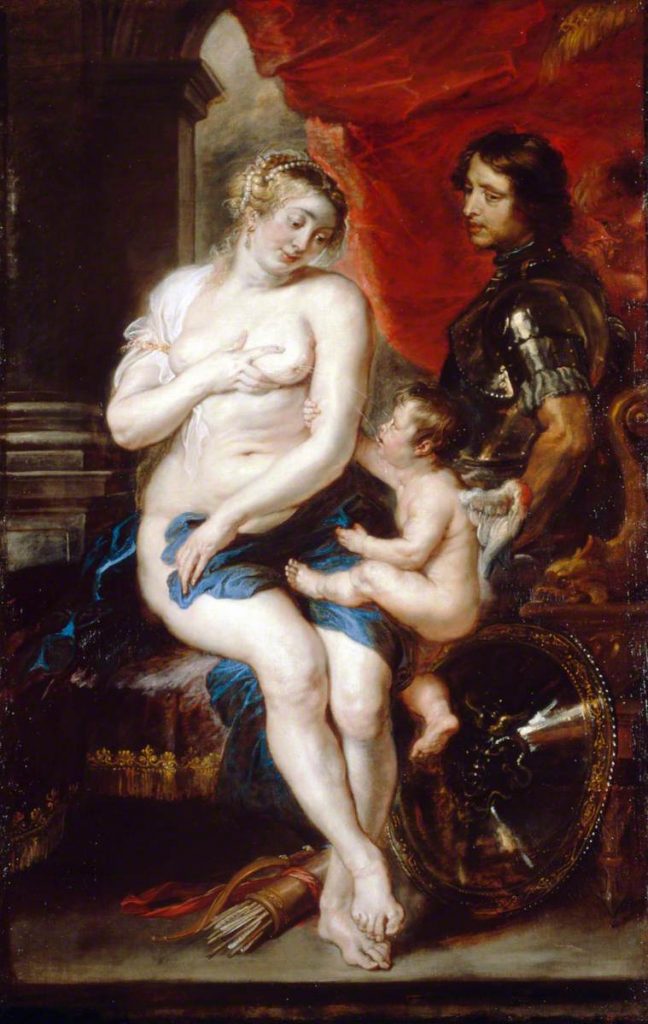
Peter Paul Rubens, Venus, Mars and Cupid, c. 1635, Dulwich Picture Gallery, London, UK.
This has always been a reductive view of an artist who could turn his hand to anything, anywhere. He started as a painter of portraits and religion and ended up a landowner happily producing idealized landscapes. He could do somber Spanish-style saints, the most grandiose royal propaganda, and dramatic Caravaggesque chiaroscuro. Some of his large multi-figured compositions have an almost Rococo excess but he saw himself as the Renaissance-man successor to Leonardo da Vinci and Michelangelo.
The curators at Dulwich are boldly making the case that Rubens was as multi-faceted and nuanced in his representation of women as he was in the rest of his art. Flesh is only part of the story: in the words of gallery director, Jennifer Scott, Rubens’ portrayal of women is vital, contemporary, and relevant today.
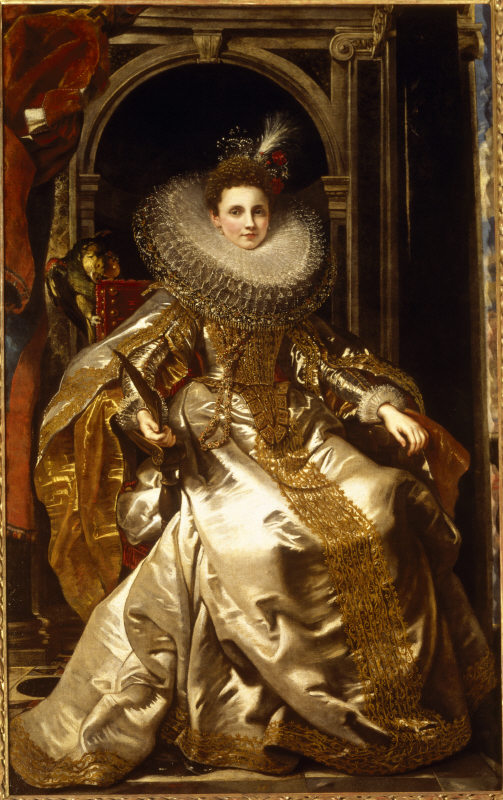
Peter Paul Rubens, Marchesa Maria Serra Pallavicino, 1606, National Trust/Kingston Lacy, Dorset, UK.
The first room of what is a small, four-room show, deals with portraits – of women he loved, of female patrons, and of others whose names are lost to time. Dominated by the huge, impressive luxury of his portrait of Marchesa Maria Serra Pallavicino, it is nevertheless the small pieces that really draw you in. There were plenty of artists who could make silk shine and pearls glow, and the Marchesa, for all her grandeur, seems swamped by her finery, her too-small head almost disembodied by the layers of lace ruff beneath.
What Rubens uniquely could paint was flesh, imperfect but human. The blue veins on his wife’s breasts and the shadows on her forehead in what was perhaps a grief-driven, posthumous attempt to catch her true likeness after her death in 1626.
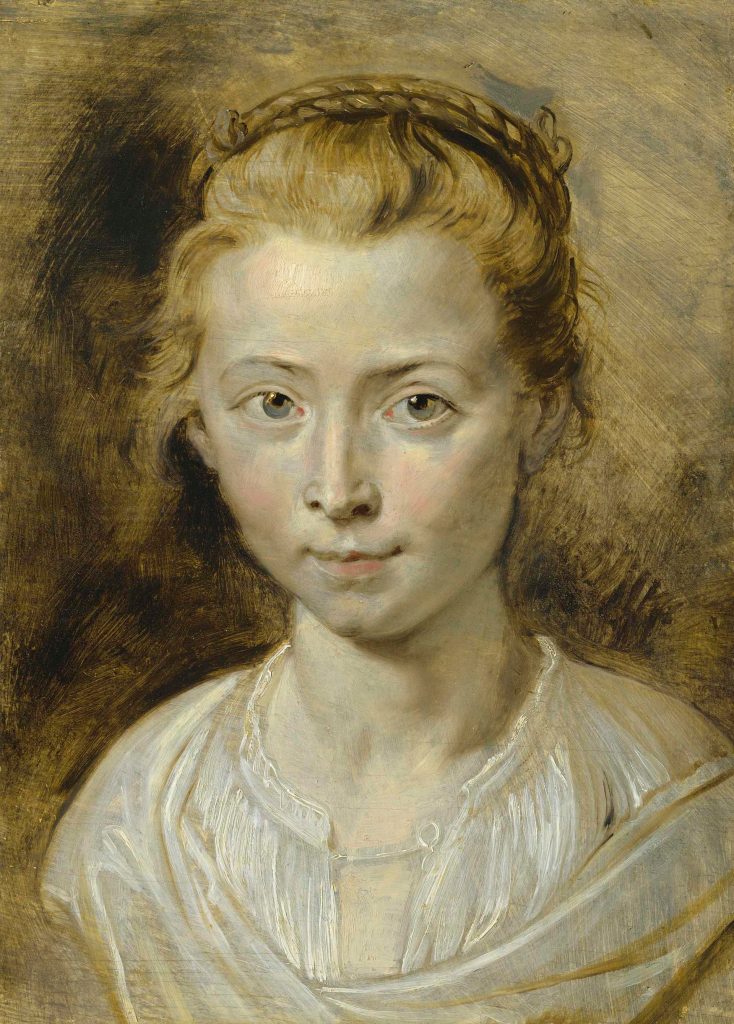
Peter Paul Rubens, Portrait of Clara Serena Rubens, The Artist’s Daughter, c. 1618, private collection.
Alongside her, small and sepia-pale, hangs their daughter, Clara Serena. Her translucently youthful skin – perhaps sickly, given her death at only twelve – seems as fragile as tissue-paper, the very opposite of that buxom strength Rubens is associated with. Yet her eyes shine bright with wit.
What the room demonstrates is not the transactional relationship of patron and artist but the emotional bonds of friends and family. Rubens was famous as a diplomat, rubbing shoulders with nobility and royalty throughout Europe but it is his two wives and his children who repeatedly feature in his art.
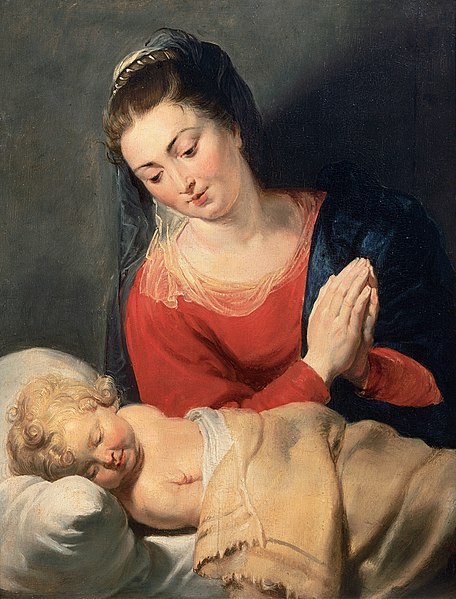
Peter Paul Rubens, The Virgin in Adoration Before the Christ Child, c. 1615, The Snijders & Rockox House Museum, Antwerp, Belgium.
The second room focuses on Rubens’ religious output. In Catholic Antwerp, he was the go-to choice for church decoration and private devotional pieces. The Virgin in Adoration of the Christ Child, again probably modeled on his wife and son, is a masterclass in introverted understatement, religion side-lined in favor of maternal love.
The room also serves as an insight into Rubens’ working practice. His use of oil sketches, both to promote his ideas to patrons and to work up compositional ideas and poses, is cited as evidence of his innovative freedom. They also give the curators the chance to show at least a hint of large-scale religious commissions which would otherwise be impossible to include.
However, it is the drawings that are the real stars. Dulwich has some incredible loans which blur the line between real women models and the saints they would come to embody in oils. Study of a Woman Looking Down, St Apollonia from the Uffizi Gallery, absolutely shines with life. The precise and delicate features are buffed up to a radiant gleam, framed by a fuzz of hair, whilst the torso and hands beneath are sketched with little more than a few lines.
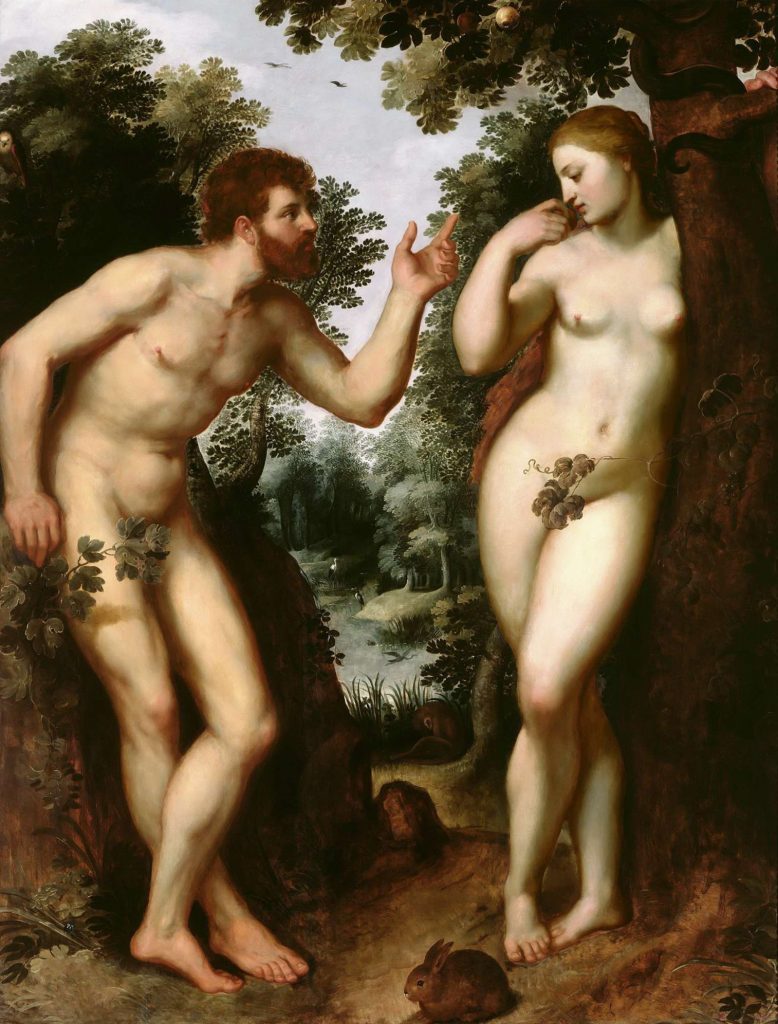
Peter Paul Rubens, Adam and Eve, c. 1599, Rubenshuis, Anwerp, Belgium.
The exhibition then delves further into Rubens’ artistic practice by looking at the development of his treatment of the nude. From Northern Renaissance roots – his first large-scale treatment, Adam and Eve, clearly harks back to Dürer and Cranach – to his discovery of classical and Renaissance sculpture in Italy from 1600. The gallery is proud of its loan of a Crouching Venus from the Royal Collection, one of the first examples of Roman sculpture he would have seen in Mantua, and here dramatically displayed with mirrors in Dulwich’s Mausoleum. We also see Rubens riffing off Michelangelo’s Night.
The curators make a tentative and not altogether convincing argument that he originally studied male life models and simply feminized them. Whether true or not, the developmental line of sketches which culminates in an intimate portrait of his young second wife, Hélène Fourment, works beautifully in the corridor-like space of the gallery.
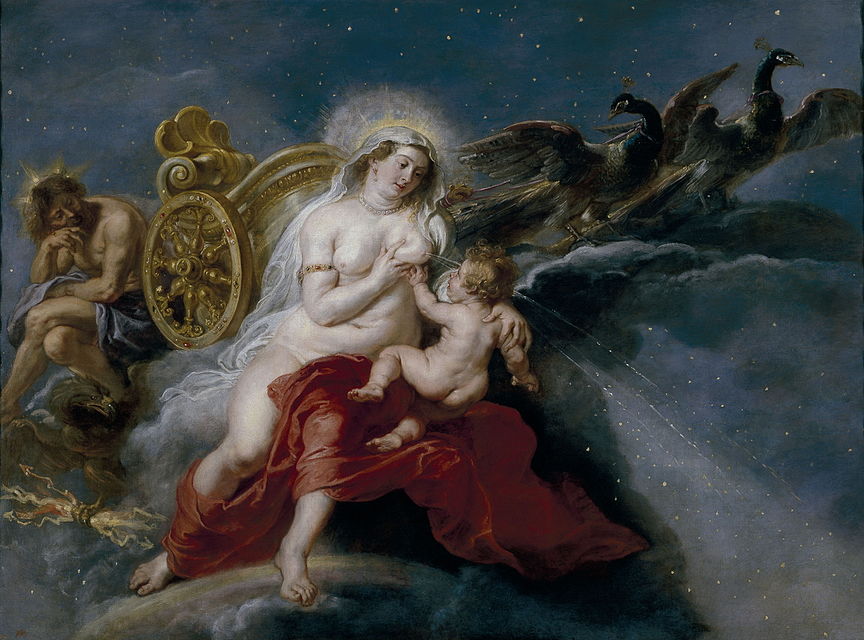
Peter Paul Rubens, The Birth of the Milky Way, 1636-1637, Museo del Prado, Madrid, Spain.
A grand finale, in every sense, is created in the dramatic last room with its slate-blue walls the perfect foil to four ‘classic’ Rubens, including Dulwich’s own Venus, Mars and Cupid and The Birth of the Milky Way, loaned by the Prado. This is a careful selection of Rubens’ mythological works, which focus on ‘peace and plenty’ rather than abduction or seduction. Equally, the narrative line that these paintings coincide with a renewed lust for love and life following his second marriage, skips over the fact that his bride was sixteen when he was fifty-three.
However, it is hard to argue that these images celebrate real, powerful, ‘women with agency’ (to use one of the curators’ phrases). And it is impossible not to get caught up in the sheer joie de vivre which they celebrate.
The thing which links all the works in the exhibition, and which ultimately makes Rubens’ representation of women so striking, is the sparkling animation that he brings to his paint. The women here, real, religious, or mythologized, are breathing, believable entities. On one level this is created by the exaggerated dynamism of poses and gestures, the state of tense flux which exists in virtually all Rubens’ canvases. It is the twinkle in the eye, the flash of light on the skin, the dashingly visible bravura of the brushstrokes. But Rubens is also a master at getting behind the eyes and inside the flesh, at making paint breathe.
The exhibition at Dulwich Picture Gallery, like all their shows, is small but otherwise, almost perfect. It shows a familiar artist, not only at his best, but in an innovative, modern and stereotype-challenging light.
Rubens and Women is on view at Dulwich Picture Gallery in London until 28 January 2024.
DailyArt Magazine needs your support. Every contribution, however big or small, is very valuable for our future. Thanks to it, we will be able to sustain and grow the Magazine. Thank you for your help!